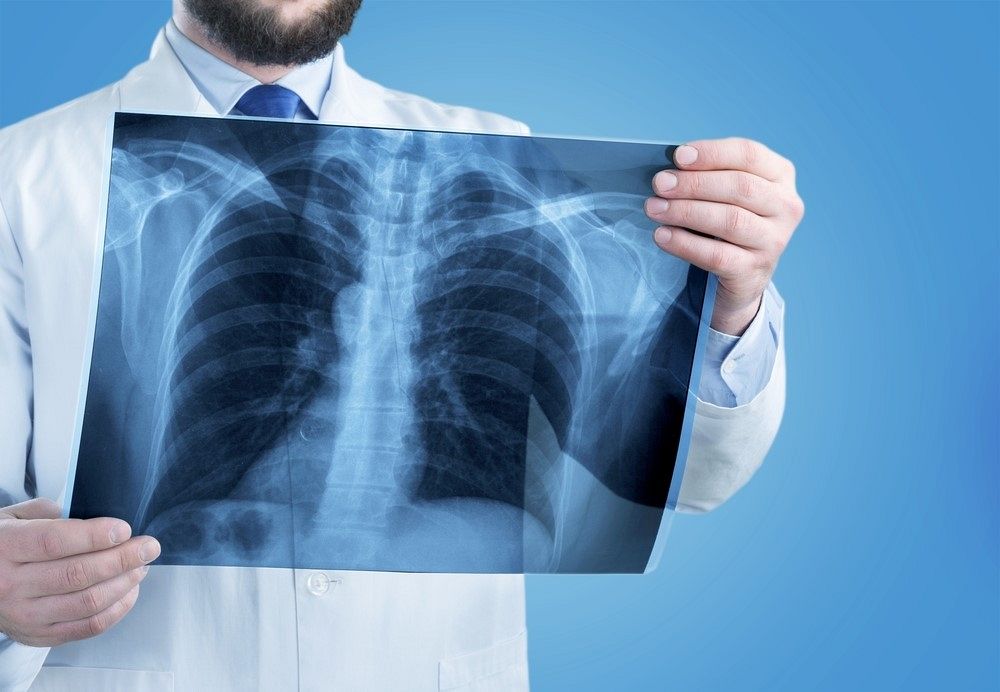Brand voice
Tuberculosis is a global health problem, and understanding this disease is essential to protect us and help fight it. In this article, you will learn important aspects related to tuberculosis, such as the causes, symptoms and forms of this disease. You will also discover how tuberculosis is transmitted and what are the preventive measures, as well as the diagnostic methods and stages. Do not hesitate to search for more information about tuberculosis to enrich your knowledge and stay healthy!
What is tuberculosis: causes, symptoms and forms of the disease
About tuberculosisyou must know that it is an infectious disease caused by bacteria Mycobacterium tuberculosis. This bacteria can mainly affect the lungs, but it can also affect other organs. Tuberculosis can be spread through the air when an infected person coughs or sneezes. A weakened immune system, malnutrition or poor living conditions can increase the risk of developing tuberculosis. [1]
Common symptoms of TB include a prolonged cough (more than 3 weeks), sputum of blood, chest pain, fatigue, weight loss, fever, and night sweats. Symptoms may vary depending on the location of the infection in the body. [2]
Tuberculosis can manifest itself in two main forms – latent and active. The latent variant has no symptoms and cannot be passed from person to person, but there is a possibility that the bacteria may become active in the future. Active tuberculosis is contagious and requires urgent medical treatment. [1]
Pulmonary tuberculosis is the most common form of the disease, affecting the lungs, while extrapulmonary tuberculosis refers to infection of other organs, such as the lymph nodes, central nervous system or bones. [2]
How tuberculosis is transmitted and preventive measures
Tuberculosis is an infectious disease that is spread through the air, when infected people cough, sneeze or talk, releasing infected particles into the air, which can be inhaled by healthy people nearby. Factors that increase the likelihood of contracting tuberculosis are prolonged exposure to an infected person, a weakened immune system, living in unsanitary or crowded conditions, and in areas with a high incidence of tuberculosis. [3]
To prevent contracting tuberculosis on an individual level, it is important to avoid contact with infected people, maintain a healthy lifestyle that contributes to a strong immune system, and observe personal hygiene measures such as hand washing and covering the mouth and nose when you cough or sneeze. It is important to know that tuberculosis can be prevented by vaccination and proper treatment. [2]
Community and national prevention measures are essential to control tuberculosis. Tuberculosis control programs include identification and treatment of infected people, vaccination of children, and public information and awareness campaigns on how to transmit and prevent tuberculosis. In Romania, according to the National Center for Surveillance and Control of Communicable Diseases, in 2020, 6,332 cases of tuberculosis were reported, with an incidence rate of 31.0 cases per 100,000 inhabitants. [1, 3]
Diagnosis of tuberculosis: methods and stages
Diagnosing tuberculosis is essential for identifying infected people and preventing the spread of the disease. There are several methods and stages of diagnosing tuberculosis, which can be used at different stages of the disease. [2]
A basic test for diagnosing tuberculosis is the tuberculin skin test (Mantoux test). This method consists of injecting a small amount of tuberculin units into the skin and measuring the body’s reaction to these proteins. A positive reaction suggests exposure to the bacteria that causes tuberculosis, but does not necessarily confirm active disease. Typically, this method is used to detect latent tuberculosis infection. [1]
Bacteriological culture is a more accurate and sensitive method of diagnosing tuberculosis, which consists in cultivating sputum or other biological samples in special media to grow the tuberculosis bacterium. The results may take several weeks, but this method can differentiate active tuberculosis from latent infection and allow the sensitivity of the bacteria to anti-tuberculosis drugs to be identified. [3]
Treatment of tuberculosis involves the use of a regimen of drugs, which may vary depending on the form and severity of the disease. The duration of treatment varies between 6 and 12 months, depending on the stage of the disease and the patient’s response to the drugs. [2]
In conclusion, tuberculosis is a serious condition, knowledge and prevention of which are essential for maintaining health. Through the information provided in this article, we aimed to highlight the causes, symptoms and forms of the disease, but also the methods of transmission and prevention. Be responsible and do not hesitate to consult a doctor if symptoms appear or if you have more questions related to this condition.
Sources:
- Bloom, Barry R, et al. “Tuberculosis.” Major Infectious Diseasesedited by King K Holmes et. al., 3rd ed., The International Bank for Reconstruction and Development / The World Bank, 3 November 2017. Accesatpe 18 mai 2023, https://pubmed.ncbi.nlm.nih.gov/30212088/
- Campbell, Ian A, and Oumou Bah-Sow. “Pulmonary tuberculosis: diagnosis and treatment.” BMJ (Clinical research ed.) vol 332,7551 (2006): 1194-7. Accessed on 18 May 2023, https://www.ncbi.nlm.nih.gov/pmc/articles/PMC1463969/
- Rabahi, Marcelo Fouad et al. “Tuberculosis treatment.” Brazilian Journal of Pulmonology: official publication of the Brazilian Society of Pulmonology and Tisiology vol. 43,6 (2017): 472-486. Accessed on 18 May 2023, https://www.ncbi.nlm.nih.gov/pmc/articles/PMC5792048/
Ziarul de Vrancea is not legally responsible for the content of the texts in the comments below. You retain responsibility for the messages exclusively.
The Vrancea newspaper wants this site to be a space for civilized discussions, for common sense comments. For this reason, those who post comments on articles must comply with the following rules:
1. To refer only to the article on which he posts comments.
2. To use a civilized language, without insults, slander, anti-Semitic, xenophobic or racist comments.
3. Attacks on the authors are prohibited, if they are not related to the text.
4. The username should not be the name of public figures or parodies of them.
The author of an article can be criticized for possible mistakes, incoherence, lack of documentation, etc.
Failure to comply with the rules mentioned above will lead to the deletion of comments, without warning and without explanation.
Repeated violations will result in the prohibition of access to this site facility.
2023-05-26 10:38:07
#tuberculosis


